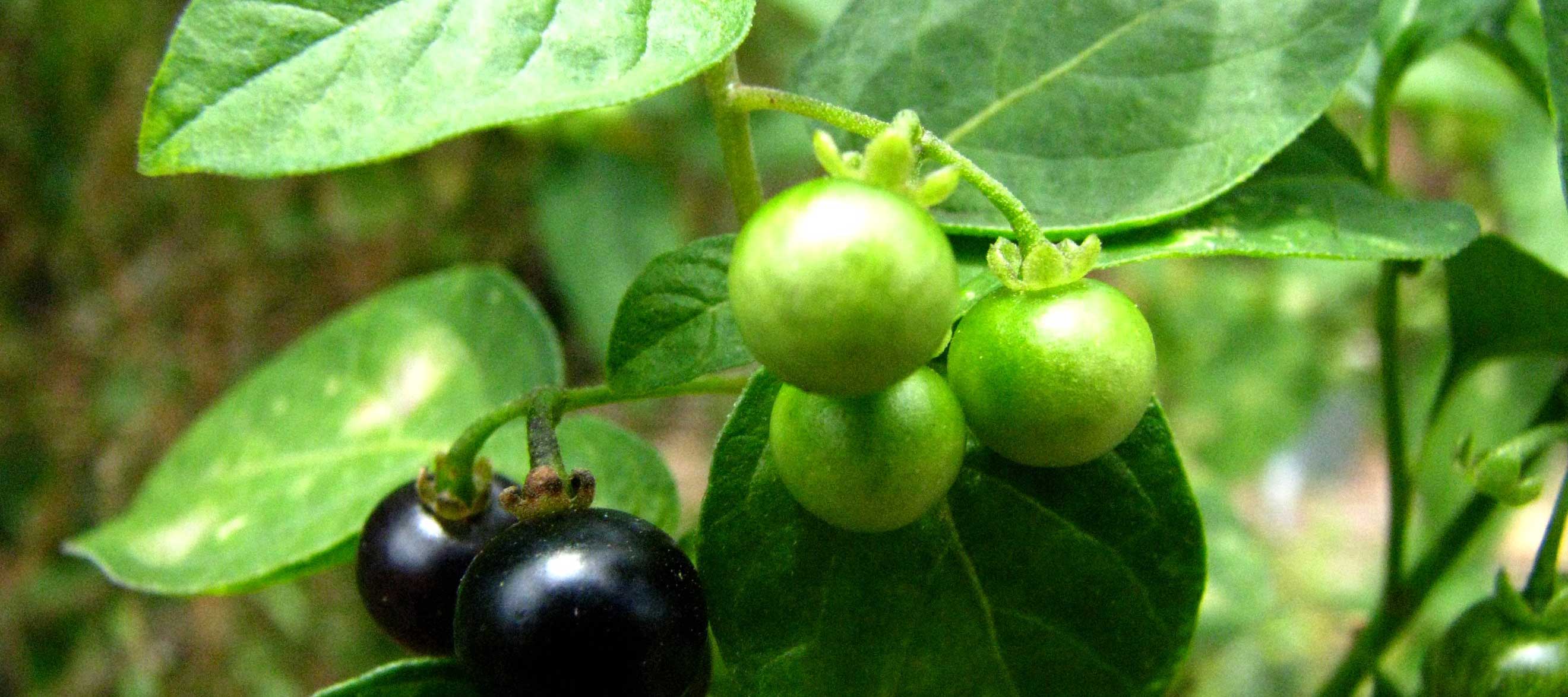
7 Sep 2019 HYN Himalayan Yoga Academy
Solanum americanum is an annual or short-lived perennial plant, erect and widely spreading, growing up to 150 cm tall. The plant is used as a vegetable, especially in Africa, where it is often called Common Night Shade. It was collected from the wild. In Sierra Leone, the lowlands of Ethiopia, Kenya, Uganda, Tanzania, Seychelles, and Mauritius it was reported for cultivated. It is a popular wild pot herb in Côte d’Ivoire and Cameroon, and in eastern Zimbabwe and Mozambique, the leaves are also eaten as a vegetable. It is also commonly found in Nepal. Many people can see it in many parts of their places lying everywhere.
Edible Uses
Young shoots and leaves – cooked. Depending on the bitterness, the cooking water is sometimes changed during the cooking. This is done especially for children – elderly people often appreciate a higher degree of bitterness and will therefore leave the flowers and young fruits, whereas people who object to the bitter taste remove them. To further reduce the bitterness, the leaves are sometimes served together with cooked amaranth, either separately or as a mixture. In Uganda, the leaves are steamed and the juice is collected and used in soups so that the nutrients are fully utilized. The leaves contain about 6990mg of beta carotene per 100g. Caution is advised, see the notes above on toxicity.
Medicinal Uses
The plant is antispasmodic and vermifuge. A decoction of the whole plant is used as a blood purifier, for treating inflammation, dissipating blood stasis, and expelling worms.
The plant is applied externally as a remedy for cardialgia, corroding ulcers, suppurating cancers, deep wounds, and skin diseases such as dartre, and for use in poultices for treating kidney pain.
The leaves are eaten raw to treat heart pains. The cooked leaves are said to have a heart-clearing effect.
The juice extracted from the leaves is used to relieve chronic conjunctivitis and related inflammations.
The pounded leaves are used to treat sores and other skin problems.
An infusion of the leaves and stems is used to improve kidney function.
A decoction of the root, mixed with lime juice and a pinch of salt, is drunk as a treatment for malaria.
